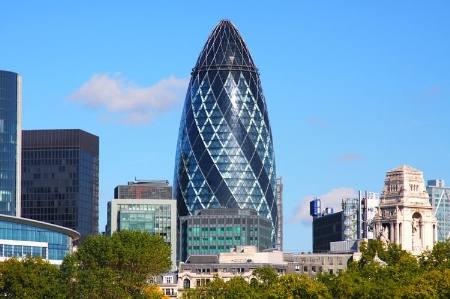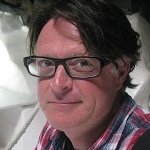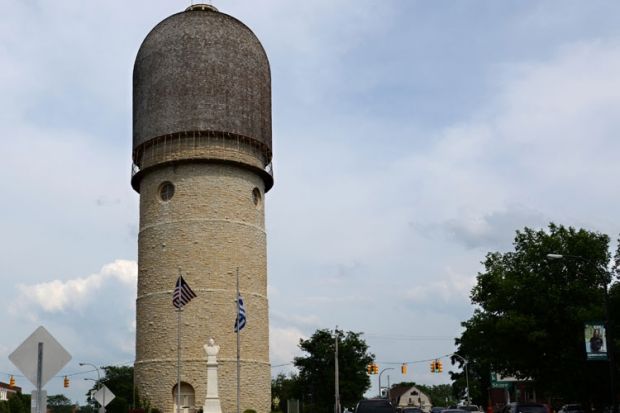Sex and Buildings is about sex and buildings, inspired by Richard Williams’ own midlife realisation that Edinburgh’s Victorian row houses were as repressive as Sigmund Freud’s Vienna. The architecture of his suburb Morningside, he believed, contributed to its occupants’ celibate lives, including his own, making him angry and frustrated. When psychotherapy and mood-enhancing medications failed to help Williams, an overworked father and husband, he began a serious search for a libidinal paradise. This quest for a place designed to promote sex took him to the library for a thorough reading of sex literature and then multiple times to Southern California for an intimate look at modern architecture. The outcome of his extensive reading and travel is a book that focuses on places that acknowledge or even encourage sex. But Williams’ itinerary isn’t what you’d expect: there are no brothels, bathhouses or no-tell motels here. Instead, he looks at a range of design projects, from iconic landmarks by famous architects to the “orgasmatron” in Woody Allen’s 1973 film Sleeper. The book is an adventurous sex-travelogue, beautifully written and pleasurable from cover to cover.
The US is Williams’ sexual Mecca; Los Angeles is his favourite city and mid-century Modern is his preferred architectural moment. In LA, he guides us masterfully through Richard Neutra’s Lovell Health House, Rudolph Schindler’s Kings Road House, John Lautner’s Sheats-Goldstein Residence and John Portman’s Westin Bonaventure Hotel. We stop in New York, too, for psychoanalysis of the Seagram Building and its über-masculine architect, Ludwig Mies van der Rohe. In Ypsilanti, Michigan, Williams shows us the world’s most phallic building, the water tower known as “the brick dick”. Likewise in London, we gawk at Norman Foster’s giant “Gherkin”, whose official justification for its shape has something to do with wind shear, and finally, we take a bathroom break in the same architect’s Commerzbank, where the executive urinals overlook Frankfurt. “Standing to relieve his bladder, cock in hand, the Commerzbank executive has an unparalleled view of the city as he pisses,” recounts Williams, while at the same time reminding readers (those who use urinals and presumably the rest of us, too) of Freud’s contention that urinating on fire was the archetypal start of male sexual competition.
The US is Williams’ sexual Mecca; LA is his favourite city and mid-century Modern is his preferred architectural moment
Stepping outside the strait-laced boundaries of traditional architectural history, Williams’ sex-based odyssey also considers still and moving images of buildings. He shows us how the influential photography of Julius Shulman and glossy publications like those by Benedikt Taschen sexualised particular places. He also urges us to look again at films such as Alfred Hitchcock’s Rear Window (1954) and novels with architectural protagonists, including Ayn Rand’s The Fountainhead (1943). He insists that the popular television series Mad Men is actually “a spectacle of sexual domination in which the architecture is complicit”. And his overarching question at every stop, real and representational, is: where is sex in architecture?
The best part of Sex and Buildings is that it is written by a straight, sex-starved man. Williams is unapologetic in his hetero-man-centric approach, from the confessional tone he takes in the introduction (“I started to think if I didn’t have more sex, I might, literally, explode”), to his ravenous descriptions of “sexy” women such as Mad Men’s Joan Holloway. (“With her red hair and purple dress, not to mention her spectacular figure, she’s an exotic creature brought to earth.”) He clearly enjoys reading Playboy, since references to it appear throughout the book. Even in a chapter on communal living, the book’s most conservative section, Williams makes it clear that he admires the sexual openness of places such as the community B. F. Skinner describes in his 1948 utopian novel Walden Two and the “free love” and communal child-rearing of the Israeli kibbutz.
The strongest building analysis appears when Williams takes on the 1958 Seagram Building in Manhattan, “one inescapably phallic tower”. He compares it to its well-dressed architect, insisting that the elegant slab echoes Mies’ bulk, especially the size of his enormous head. Mies’ love of fine fabrics and objects such as cigars and umbrellas “all fall into the category of Freudian phallic objects”. This same dandyishness characterises his tall building, says Williams, with its emphasis on fine lines and exacting details. The section closes with an unforgettable analysis of Werner Blaser’s 1964 photo of the architect in his Chicago apartment: “This is a man who possesses space and those around him, who is listened to (however little he has to say), who expresses power through stillness and lack of physical activity. That form of masculinity may no longer be in fashion but it has an epic lineage from Buddha to Hitchcock and is, in its own way, highly sexual even if it does not express itself in relentless sexual activity.”

Williams’ perspective as a straight, married man is especially distinctive because most other significant texts in this genre are written from feminist and/or gay standpoints. Alice Friedman’s Women and the Making of the Modern House: A Social and Architectural History (2007), Sylvia Lavin’s Form Follows Libido: Architecture and Richard Neutra in a Psychoanalytic Culture (2007) and Aaron Betsky’s Queer Space: Architecture and Same-Sex Desire (1997) are classic books on sex and architecture on which Williams depends. His reading of the sex literature by Havelock Ellis, Margaret Mead, Alfred Kinsey and others is refreshing, as, for the most part, architectural historians simply haven’t gone there.
That said, Sex and Buildings’ focus on architecture through the lens of heterosexual masculinity can also be its weakness, and chapters on feminist and queer space fall flat. Oddly, the best feminist space he can conjure up is the Greenham Common Women’s Peace Camp in Berkshire, a 1980s women-only protest camp that hardly relates to the rest of the book. The chapter on queer space is even stranger, with an implicit thesis that the contribution of queer studies has been to complicate sex. Weirder still, Williams appears to undertake to “prove” that US architect Charles Moore wasn’t really gay, supporting an assertion by the Moore Foundation in Austin, Texas. Williams then takes us through the exquisite houses that Moore designed for himself in Orinda, California and New Haven, Connecticut, which are both replete with aspects of gay culture identified in other literature, as evidence for Moore’s straight life. The case Williams makes is thoroughly unconvincing and, like the section on feminism, disconnected from the other chapters.
Sex and Buildings is juicy and voyeuristic. Williams’ case studies, however, seem personal and rather random. Certainly they aren’t parallel in any scientific sense, since they are all over the map in terms of both time periods and geography. Let’s face it, these are the places Williams just wants to write about and the book has a brazen tone of “I don’t care if it makes sense”, which I must admit I admire. “I am in no doubt at all that the book would have been different written from another class perspective…My preoccupations were nevertheless authentic ones based on my circumstances, and my geographical and intellectual itinerary was determined in large part by my origins,” he boasts in the introduction. In this way, it is as much a book about Williams’ self-discovery as it is about sex and buildings.
The author

Richard Williams, professor of contemporary visual cultures at the University of Edinburgh, lives in Morningside in the Scottish capital. “There’s a picture of my street in the book,” he observes. “I live with my wife Stacy, who’s an art historian and curator, and my daughter Abby (11) and son Alex (8). There are two rather grumpy cats too. You honestly couldn’t get any more conventional.”
Edinburgh “is an extremely handsome place, and if you’re in work, you can live well. It has many of the facilities of a much larger city. The geography (and geology) is pretty extraordinary. The university is great - it’s got its eccentricities, for sure, but it’s always treated me very well. And I’ve got marvellous friends here.’
“The city can be maddening, though: I’m on public record saying as much. Aside from the universities, its institutions are too often inward looking, parochial and snobby. Yet they’re convinced they’re the centre of the universe. The reality is that nothing of any consequence has happened since 1890.”
Where would he live if he had the choice? “Ah, don’t we all like to play this game? I’m less susceptible to it these days, as everywhere has its pitfalls. And much as I complain about Edinburgh’s eccentricities, I’ve been here so long I’m part of its landscape. But I really like Los Angeles. The beach, the climate, the outdoor life, the relentless optimism - and the freeways, believe it or not. They’re still a real pleasure to drive on, for the most part.”
Williams was born in the US - “by chance, really. My parents lived there in the mid-1960s and I was born at the end of their stay. I moved to the UK almost immediately. I have US citizenship as a result, but I’ve never really lived there. But it was always an important place. My parents grew up in a very austere 1950s Northern Ireland, and the US made a huge impact on them, and consequently me. There is also a minor creation myth involving sailing back to Britain as a baby on the liner SS United States. I became slightly obsessed with it as a child - did lots of drawings of it, made models and so on. The amazing thing is that the ship still exits, but as a rusting hulk in Philadelphia. I went to see it a couple of years back. It is one of the most profound experiences I have ever had, seeing something that I knew intimately as an image, but had never seen with adult eyes. There are photographs of me on it as a baby, mid-Atlantic, but I had no memory of it of course. I did a photographic exhibition about it in 2012. Anyway, I digress. My wife’s American. I seem to go there a lot. I should add that I lived in Madrid during 1990-93, and that was as powerful an experience as any I’ve had. But I’m culturally a Manc, really, albeit a rather cosmopolitan one. I’m not sure what other people think I am. ‘Hard to place’, I imagine.”
Of his early interest in scholarship, Williams says: “I was around academics from the start. My father is a retired professor of astrophysics; his PhDs were often hanging around at home drinking homebrew. It seemed like a decent life. My mother was important too - she was a GP with interests in psychogeriatrics. She put me on to Oliver Sacks, and psychology in general, which has remained a lifelong interest.
At school, he was “a very conscientious, studious child. I got into art a bit later. I had a very educational time studying fine art at Goldsmiths in the mid-1980s. Rather dissolute, but fascinating - lots of rummaging through skips and derelict buildings. I learned a huge amount, although the academic results weren’t great. I put that right a bit later on, when the University of Manchester took a chance and helped me do a PhD despite a slightly nutty academic record. I owe them a great deal for taking that chance.”
Although Williams cannot remember one building in particular that spurred his interest in architecture, he was “always fascinated by buildings other people seemed to find repellent. I remember Manchester’s Arndale Centre under construction in the 1970s. It was quite a sight. What else? The afternoon sun on the Great Northern Warehouse, Deansgate, about the same time. Great Ancoats Street on a busy Friday afternoon, looking at the gleaming CIS tower rising out of a mess of derelict Victorian storefronts. The Hulme Crescents. Manchester in the 1970s was a wreck, but it certainly made an impression. Later, I’d say Bankside Power Station. I used to look at it most weekends in the mid-1980s when I was a student. I’d cycle up there from Camberwell, have a drink in the Founder’s Arms, and just look at it.”
“The first house I remember living in was extremely modern for the time: a mass-market take on Eric Lyons/Span design. Ribbon windows with aluminium frames, sliding patio doors as part of the original spec, all services built around a central core. You could run unimpeded all the way around the ground floor. It still represents an ideal home for me. We left because of the thin walls. My mother said they were running a brothel next door, and they were servicing clients all day. Apparently you could hear everything.”
Prince Charles’ famous comment about “monstrous carbuncles” has fed into the received wisdom that Britain is particularly hostile to innovative architecture. Williams, author of the 2009 book Brazil: Modern Architectures in History, says, “I actually think Modernism is an elite taste wherever it shows up, but in some places, the elite has more power to get things done. In Brazil, it was a tiny handful of people, with Oscar Niemeyer at its centre. You could say something similar about France. In the US, it was people with money who wanted to make a splash. Britain is as modern as anywhere else, but it has long traditions of political compromise that don’t apply elsewhere. That said, the UK’s record on state housing is pretty thorough. It’s difficult to drive along the Westway, or the M8 in Glasgow, and not see a country in love with modernity. It just gets forgotten, because this is the landscape of the poor rather than the rich.”
Sex and Buildings contains confessional elements that are rare in scholarly monographs. Observes Williams: “My writing and teaching had been moving in that ‘confessional’ direction for a long time, and it was my editor at Reaktion, Vivian Constantinopoulos, who encouraged me. For all kinds of reasons, she was right (she almost always is). There’s been a solipsistic trend in certain kinds of humanities writing lately, but it’s generally stopped short of what I’ve done.”
He adds: “I tried to make my background clear, and also my thought processes, so that the reader could see where I was coming from. I couldn’t have written the queer and feminist material, honestly, in any other way. I also wanted to make the authorial voice one that allowed doubt and reflection. I don’t know the answers to the questions that I pose, but I think the journey I went on was worthwhile. Was it hard to write like this? No, actually. I’ve been teaching for years in a way that encourages students to make full use of their own experience. I’d also say that the writers I most admire did the same thing. Oliver Sacks always inscribes himself into his clinical accounts; it’s not without its problems, but I think he’s aware of what they are. The same goes for Richard Sennett, the sociologist. His best, most provocative writing happens when he cuts loose.”
Asked whether any family members have read Sex and Buildings, and what they have thought of it, Williams says, “My children said they were embarrassed by it - but their minds are so completely in the gutter, I think they were just putting it on. When I was on BBC Radio 3, my parents dutifully listened. My dad said, ‘I understood every word you said. But I still don’t understand the way the words fit together.’ My wife had to clear everything of course, so she has read it. What I hope comes across is that it’s a book about a particular stage of life, a set of compromises that are widely shared, and which we both experienced. I couldn’t imagine write the sort of memoir that criticised someone I was close to. Not ever.”
Williams is a witty and prolific blogger at richardjwilliams.net. He recently damned Venice’s best-known art event as “a biennial festival of Garbage. The mysterious Biennale attracts pilgrims from all over the world to worship displays of rubbish, and speak in mystical terms, guided by the enigmatic catalogo, a religious text. The origins of this rubbish-worship are obscure.”
“I’ve just spent a week in Venice, funnily enough,” he comments when asked if he finds the city itself repellent. “The whole place is ludicrous. It’s hard to know where to start. Maybe I should just say that if you’ve been in the Piazza San Marco at 5pm in August with an 8-year-old who needs to pee, there is probably nowhere on earth so inhumane. I think anyone who thinks Venice is any kind of urban ideal is deranged. And the food is unspeakable.”
Of pastimes other than damning the Serenissima, Williams confesses to doing “a lot of stuff outdoors. If there’s water, I tend to swim in it, and if there’s a hill, I go up. It’s the rules. But I’m a failed rock and roller, really. I have a red SG guitar, just like Jack Black’s in School of Rock. Alex (my son) and I play a lot together. We play bluesy jams with a solid R&B groove. We like to imagine we’re in the Grateful Dead circa 1968. I’m far too undisciplined to be any good. Alex has the makings of a guitar hero, though…”
Listen to our podcast interview with Richard Williams
Karen Shook
Sex and Buildings: Modern Architecture and the Sexual Revolution
By Richard J. Williams
Reaktion, 224pp, £25.00
ISBN 9781780231044
Published 15 August 2013
Register to continue
Why register?
- Registration is free and only takes a moment
- Once registered, you can read 3 articles a month
- Sign up for our newsletter
Subscribe
Or subscribe for unlimited access to:
- Unlimited access to news, views, insights & reviews
- Digital editions
- Digital access to THE’s university and college rankings analysis
Already registered or a current subscriber? Login




